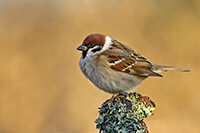Supersize Your Yard for Songbirds
 We simply love a recent article from Audubon magazine about the best plants to help our feathered friends refuel during the cold, winter months.
We simply love a recent article from Audubon magazine about the best plants to help our feathered friends refuel during the cold, winter months.
This time of year many of us are making spring plans for our yard and gardens; deciding what plants we’ll pull out, moving others and of course, researching what new items to include.
If you’re interested in not only attracting but supporting birds, consider adding some native, or selected native, high energy plants; meaning fruit bearing items high in fat which are the perfect refueling food for the birds.
Big Mac Myrica
The Audobon article notes a recent study by the University of Rhode Island. It names plants which produce berries with the highest amount of fat – aka ‘bird fuel’.
With berries consisting of more than half fat, the winner is, Myrica pensylvanica!

For areas where the species is too large and a more compact sized plant is required, we’d like to recommend Bobbee Bayberry.

Besides being more compact, Bobbee has smaller, dark and wavier leaves. Like its parent, pewter gray berries are aromatic and the plant tolerates acidic soils.
UpShoot’s plant portfolio includes the following additional selected natives from the top refueling plants mentioned in the article: Ultra™ Common Hackberry and dentatum viburnums including Raspberry Tart™ Arrow Wood Viburnum, Fireworks™ Arrow Wood Viburnum and Blue Blaze™ Arrow Wood Viburnum.